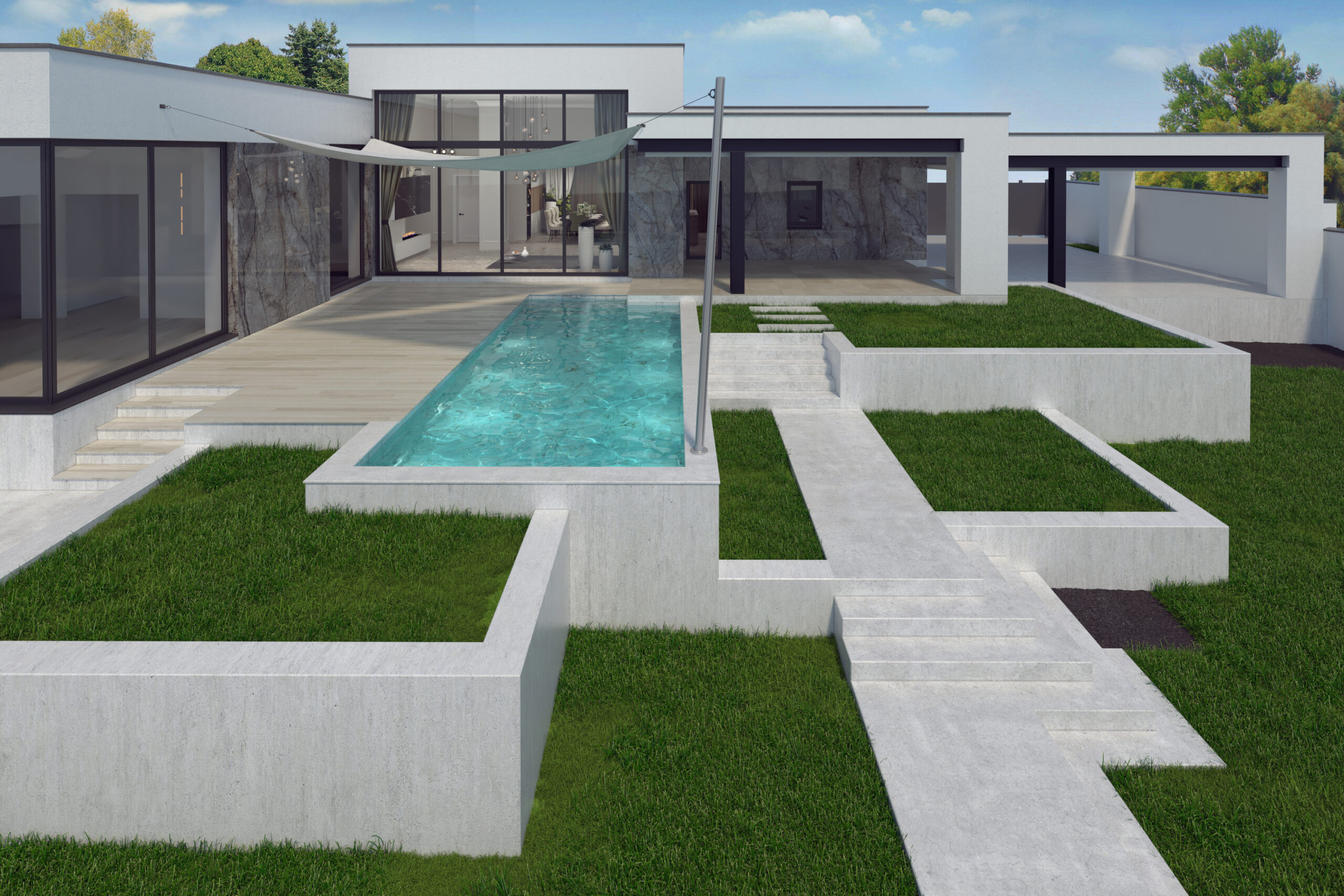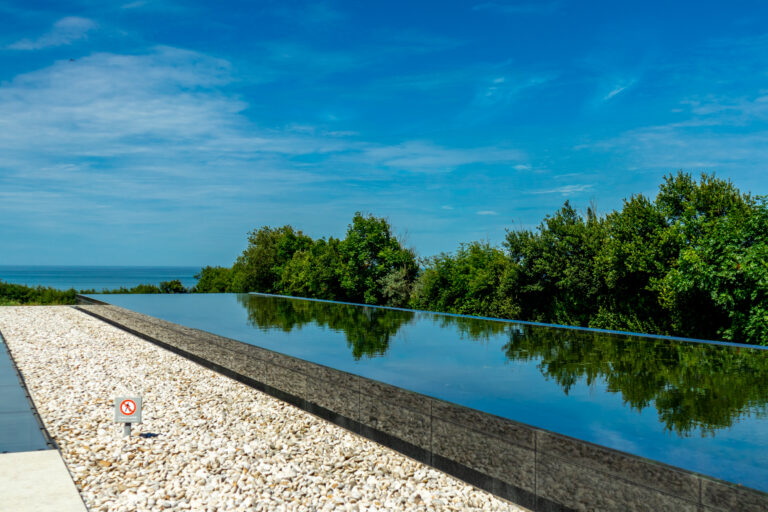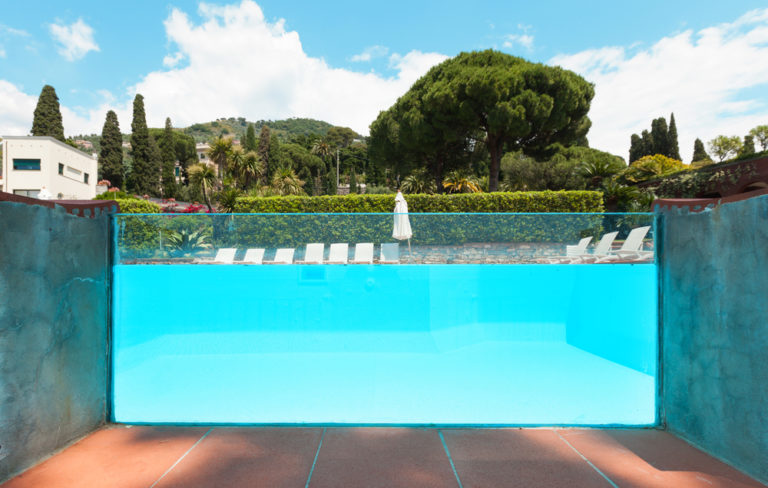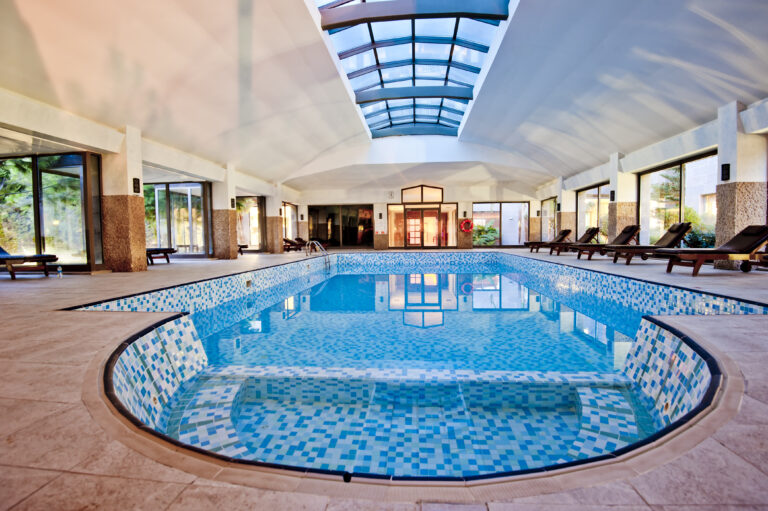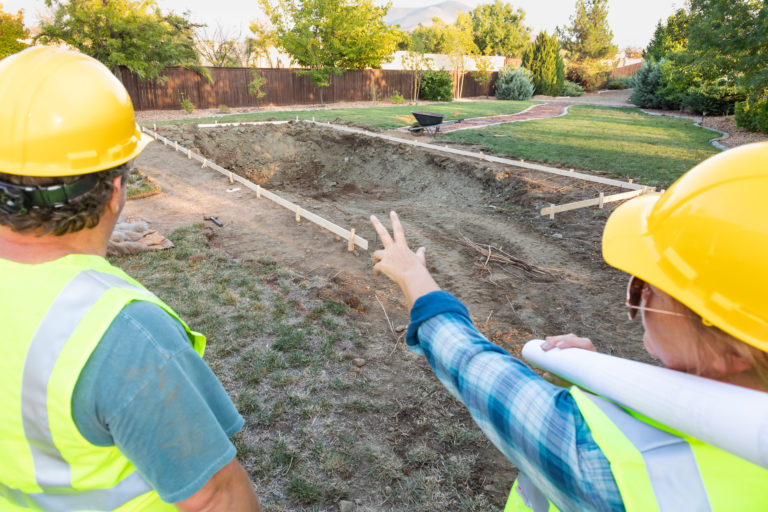Designing Pools for Difficult Terrains and Sloped Backyards
You’re facing a steep slope in your backyard and dreaming about a pool? Don’t worry, it’s not an impossible task.
In this article, you’ll find innovative design solutions and essential considerations for pool construction on challenging terrains.
We’ll also delve into safety measures to keep in mind and maintenance tips you’ll need.
Let’s turn that daunting hill into your personal oasis!
Understanding the Challenges of Difficult Terrains and Sloped Backyards
You’re likely to face a number of challenges when you’re trying to design a pool for difficult terrains and sloped backyards.
The first hurdle, terrain analysis, is all about gaining an in-depth understanding of the ground where the pool will be built. You’ve got to assess the soil type, drainage patterns, and natural lay of your land. You can’t just bulldoze your way through this – careful planning is key.
Then there’s slope stabilization. If you’ve got a steep backyard, you’ll have to figure out how to keep it from eroding during construction or once the pool is in place. This might need extra engineering work like retaining walls or special landscaping techniques.
But don’t get discouraged! These challenges aren’t insurmountable and with the right approach, they can be overcome. So roll up your sleeves, do your homework on terrain analysis and slope stabilization methods, and let these obstacles become stepping stones towards creating that dream pool in your challenging backyard landscape.
Remember: every problem has a solution; it’s all part of turning difficult terrains into stunning aquatic paradises!
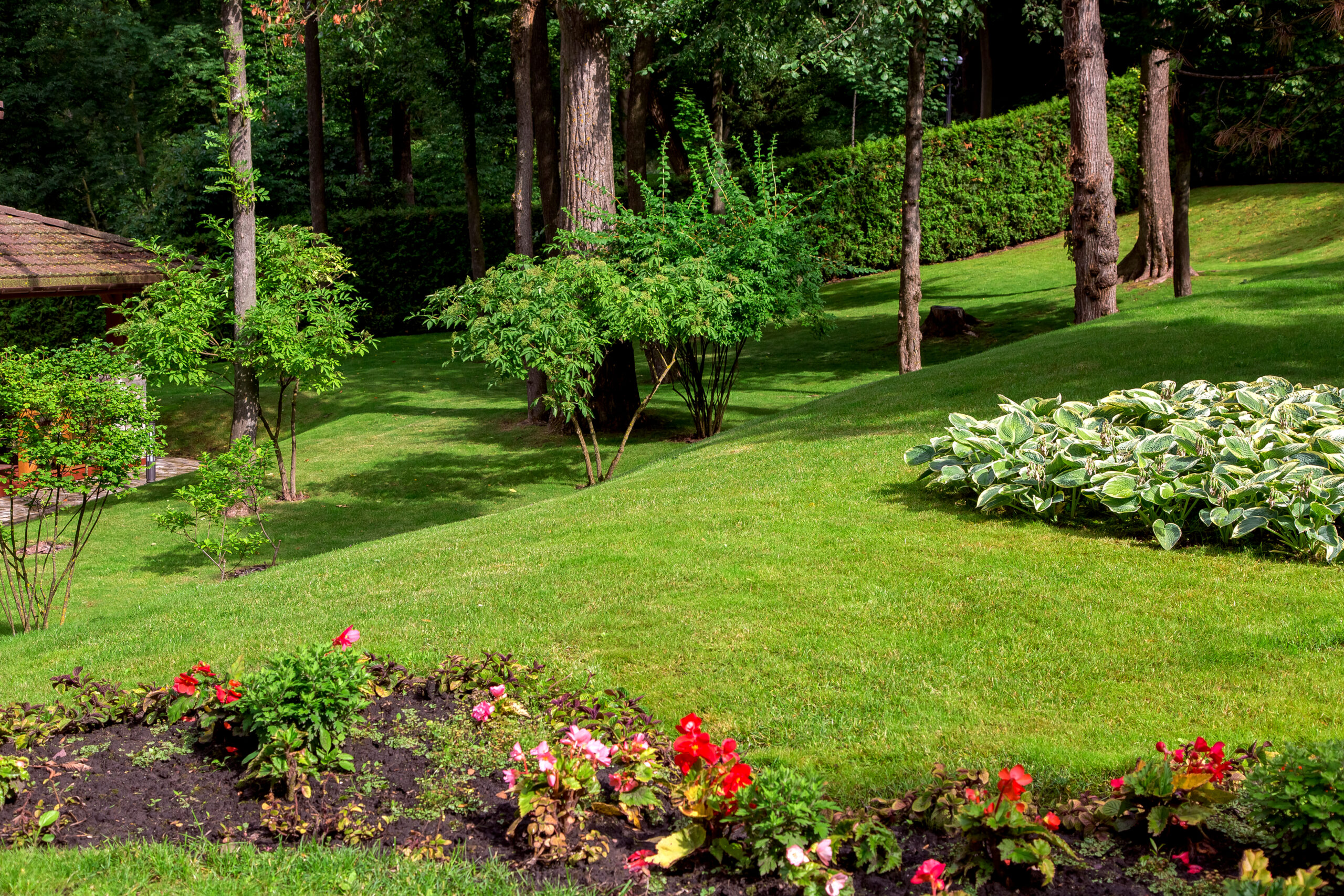
Essential Considerations for Pool Design on Sloped Terrain
When you’re planning a pool for an uneven landscape, it’s crucial to consider factors such as drainage, soil stability, and the overall layout. You’ll need to ensure that the land can support the weight of the pool without shifting or collapsing. This is where soil stability analysis comes in handy. It’s a tool that helps you understand how stable your yard is and whether it can withstand construction.
Terrace leveling techniques are another consideration when designing pools on sloped terrain. These methods help create flat surfaces on hilly terrains, making it easier to install pools. Think about using these techniques when dealing with steep slopes since they not only provide space for your pool but also improve water flow and reduce soil erosion.
Choosing the right spot for your pool isn’t all about aesthetics; it’s about safety and functionality too. You’ve got to think about sunlight exposure, accessibility, privacy, and more importantly, how well your chosen area drains rainwater away from your home and other structures.
Innovative Design Solutions for Pools on Steep Slopes
Innovative solutions are key to tackling the challenge of steep slopes, offering new possibilities for pool placement and design. With slope stabilization techniques, you’re not just preventing soil erosion but also creating a solid foundation for your dream swimming pool.
| Slope Stabilization Techniques | Infinity Pool Benefits |
| Prevents soil erosion | Gives an illusion of endless water |
| Creates strong foundation | Enhances aesthetic appeal |
| Makes use of existing terrain | Increases property value |
| Allows innovative designs | Creates a luxurious feel |
| Ensures safety | Provides unique swimming experience |
You’ll be amazed how these techniques can transform your sloped backyard into a stunning oasis. But it doesn’t end there. Ever heard about infinity pools? They’re not just for luxury resorts anymore; they’ve become increasingly popular in residential properties too!
Infinity pools offer numerous benefits that make them well worth considering. The visual effect they create is truly breathtaking-it’s like the water extends into the horizon or merges with a nearby body of water or landscape. This kind of aesthetic appeal can significantly boost your property value. Plus, who wouldn’t love that unique, luxurious swimming experience right at their own home?
Safety Measures to Incorporate in Difficult Terrain Pool Design
You’re about to delve into crucial safety measures for designing pools in difficult terrains.
We’ll discuss how incorporating slip-resistant materials can drastically reduce accidents and injuries, keeping pool-goers safe.
Also, you’ll learn the importance of ensuring adequate drainage to prevent water build-up which can damage your terrain and degrade the structural integrity of your pool.
Incorporating Slip-Resistant Materials
It’s crucial to incorporate slip-resistant materials in your pool design, especially when dealing with sloped terrains. Material selection plays a key role here. You can’t just pick any tile or finish for your pool deck and hope it’ll do the trick. It needs to be tested for slip resistance.
In the world of pool construction, there are various methods used to test materials’ slip resistance under both wet and dry conditions. These tests help you choose a material that provides traction even when it’s wet, reducing the risk of slips and falls around your pool area.
Ensuring Adequate Drainage
Don’t forget, ensuring adequate drainage is just as important as selecting slip-resistant materials for your swimming area. If you’re considering Drainage systems options, keep in mind that they play a pivotal role in Rainwater management. A well-designed system can prevent waterlogging and protect your pool’s structure from damage.
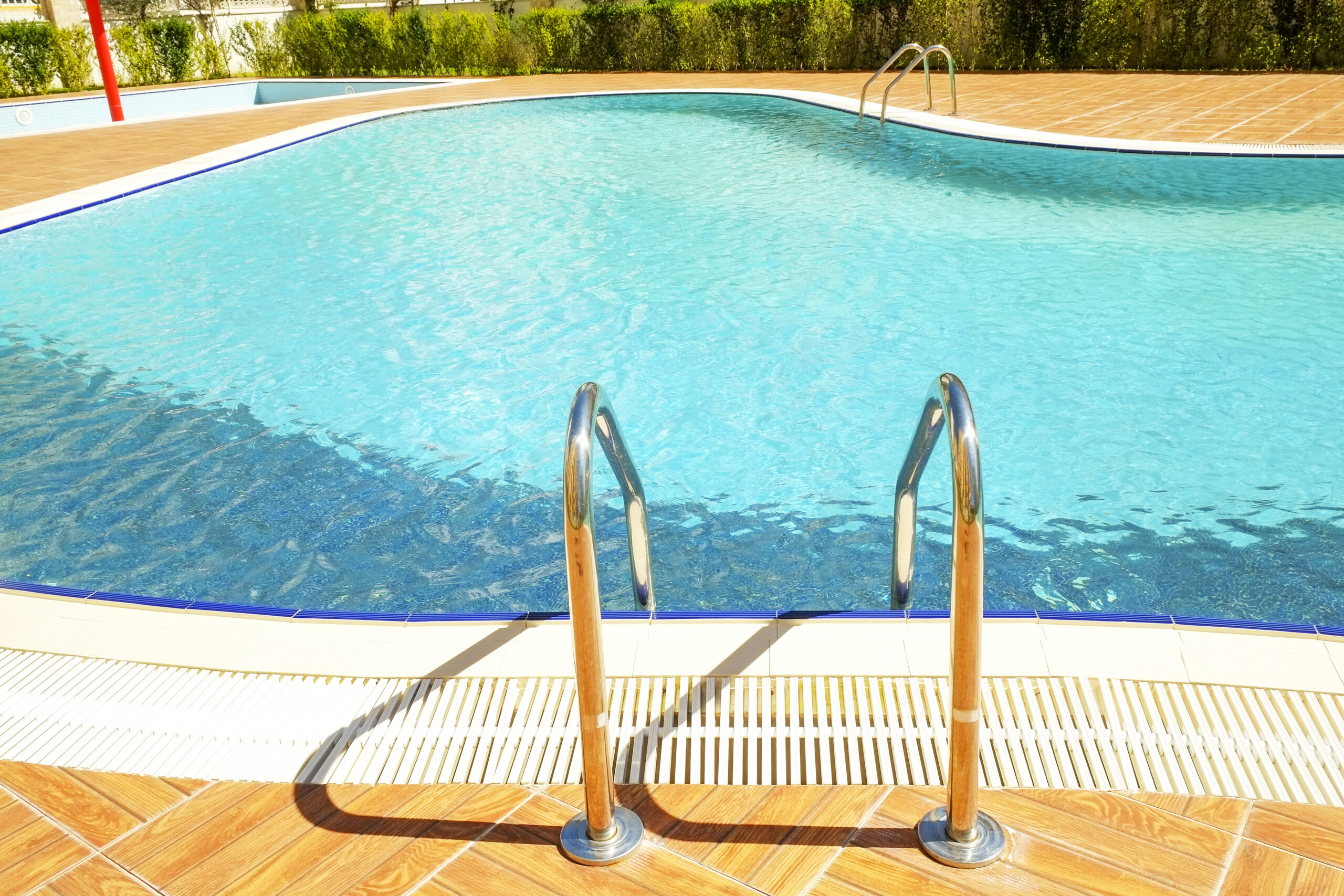
Explore the table below to understand two key types of drainage systems:
| System Type | Description |
| Channel Drains | These long, narrow drains collect and redirect water away from the pool efficiently. |
| Slot Drains |
Unlike channel drains, these are discrete and blend well with the pool design without compromising functionality. |
Case Study: Successful Pool Designs on Difficult Terrains
Let’s delve into a case study where pool designs were successfully implemented on difficult terrains.
Imagine you’re the owner of a hillside property, dreaming of your own oasis but are confronted by an uneven landscape. The first step is to conduct a terrain analysis.
In this phase, you’ll map out the area’s contours and levels, identify potential issues like rock formations or soil instability. You might think it’s just about how your pool will look, but it’s also about ensuring safety and longevity – because no one wants their backyard pool sliding downhill!
The cost implications can’t be overlooked either. Yes, designing pools for challenging terrains is usually pricier than flat landscapes due to more complex construction methods required to stabilize the project. But don’t panic! With careful planning and innovative design ideas like infinity edges that blend with the horizon or incorporating natural elements such as rocks into the layout, you can turn those challenges into unique features.
So relax! Difficult terrains aren’t barriers but opportunities to create truly stunning pools that not only enhance your property value but also provide endless enjoyment for years to come.
Maintenance Tips for Pools Built on Sloped Backyards
Having explored various successful pool designs on difficult terrains, let’s now shift our focus to maintaining these unique structures. Specifically, we’ll delve into pools built on sloped backyards and how to ensure their longevity.
Undoubtedly, one of your top priorities should be implementing robust slope stabilization techniques. Why? Because they’re designed to offset the effects of gravity, which naturally pulls everything downwards – including your beautiful pool! By employing these methods, you can drastically reduce erosion and landslides that could potentially damage your investment. Techniques range from retaining walls to ground anchors; it’s essential you choose what fits best with your specific situation.
Additionally, don’t overlook the power of natural landscaping integration. It’s not just about making your backyard look attractive; it serves a practical purpose too. Native plants are fantastic at reducing soil displacement – their roots hold onto the earth like nature’s own grip gloves! This natural method is great for complementing those slope stabilization techniques you’ve implemented.
Frequently Asked Questions
What Are the Costs Associated With Designing and Building a Pool on Difficult Terrains and Sloped Backyards?
You’ll face higher costs due to terrain analysis and slope stabilization. These extra steps ensure safety and longevity but can significantly increase your budget. It’s an investment, but well worth it for a stunning pool.
How Long Does the Construction Process Typically Take for Pools on Difficult Terrains?
When you’re building a pool, terrain assessment techniques and slope stability solutions can extend the construction process. It’s typically longer than flat terrains, often taking anywhere from 3 to 6 months.
What Are the Environmental Impacts of Building a Pool on a Slope?
Building a pool on a slope can disrupt natural water flow, but using slope stabilization techniques and pool drainage solutions, you’ll minimize erosion and other environmental impacts. It’s about smart, sustainable design.
Are There Specific Pool Types or Styles Better Suited for Sloped Backyards?
Yes, there are. Infinity or negative edge pools work well on slopes. Using slope stabilization techniques and slope-friendly landscaping, you can create a pool that blends seamlessly with your sloped backyard terrain.
Can Existing Pools Be Modified to Better Adapt to a Sloped or Difficult Terrain?
Yes, you can modify existing pools to adapt to challenging terrains. You’d use slope stabilization techniques and pool drainage solutions. These adaptations ensure your pool’s stability and functionality despite the difficult landscape.

